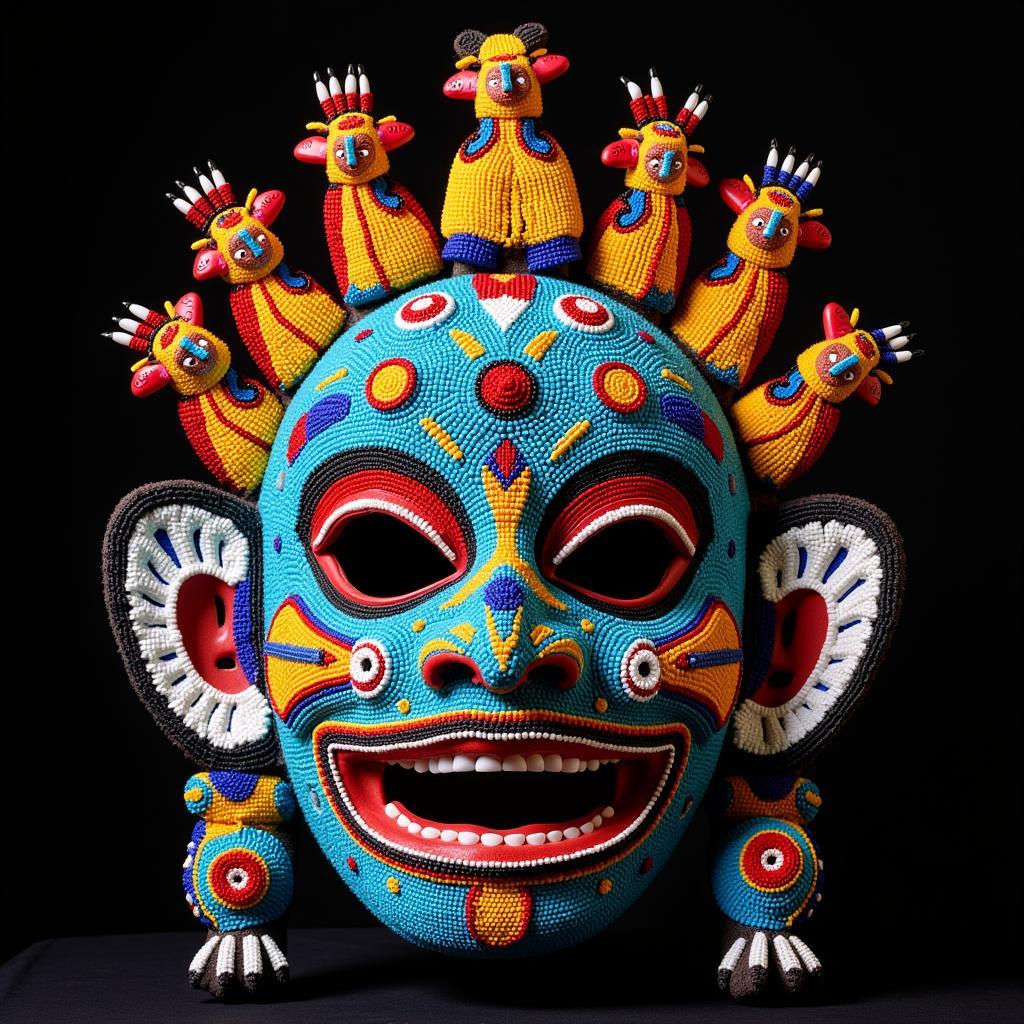Exploring the Rich Heritage of Antique Hawaiian Art
Antique Hawaiian Art offers a captivating glimpse into the rich cultural history of the islands. From intricate carvings and vibrant featherwork to unique kapa cloth and symbolic tattoo designs, these art forms tell stories of ancient traditions, spiritual beliefs, and a deep connection to the natural world. This article delves into the fascinating world of antique Hawaiian art, exploring its various forms, significance, and enduring legacy. art deco filigree pendant
Understanding the Significance of Antique Hawaiian Art
Hawaiian art wasn’t simply decorative; it held deep spiritual and cultural meaning. Each piece, whether a carved wooden figure or a meticulously woven feather cloak, served a specific purpose, often reflecting societal status, religious beliefs, or genealogical lineage. These artifacts provide invaluable insights into a society that thrived in harmony with nature and celebrated its unique heritage.
What makes antique Hawaiian art so valuable? Its rarity, historical significance, and the masterful craftsmanship involved elevate these pieces beyond mere objects. They are tangible links to a vibrant past, offering a window into the lives and beliefs of the Hawaiian people.
Delving into the Different Forms of Antique Hawaiian Art
Antique Hawaiian art encompasses a diverse range of forms, each with its own distinct characteristics and cultural significance. Let’s explore some of the most prominent examples:
-
Wood Carvings: From intricate sculptures of deities to practical tools and ceremonial objects, wood carving played a central role in Hawaiian culture. The choice of wood, the carving techniques, and the imagery all held symbolic meaning.
-
Featherwork: The vibrant and elaborate featherwork of ancient Hawaii, particularly the ‘ahu’ula (feather cloaks) and mahiole (feather helmets), were reserved for the ali’i (royalty) and symbolized their power and divine status. The meticulous process of collecting and assembling feathers from native birds made these pieces incredibly valuable and rare.
-
Kapa Cloth: Made from the bark of the wauke or mamaki tree, kapa cloth was an essential part of everyday life in ancient Hawaii. Used for clothing, bedding, and ceremonial purposes, kapa featured intricate designs created through stamping, painting, or dyeing.
-
Tattooing: Traditional Hawaiian tattoos, known as kakau, were more than just body art. They told stories, marked lineage, and represented spiritual beliefs. The designs, often intricate geometric patterns or depictions of natural elements, were applied using hand-tapped needles and natural pigments.
Where to Find and Appreciate Antique Hawaiian Art
Several museums and cultural institutions house significant collections of antique Hawaiian art. These institutions offer an opportunity to admire these treasures firsthand and learn more about their historical and cultural context. The Bishop Museum in Honolulu, for example, boasts an extensive collection of Hawaiian artifacts, including featherwork, carvings, and kapa cloth.
Are there ethical considerations when collecting antique Hawaiian art? Absolutely. It’s crucial to ensure that any purchase is made through reputable sources and respects the cultural heritage of the Hawaiian people. Avoid purchasing items with questionable provenance or those that may have been illegally obtained. Prioritize supporting institutions and organizations that work to preserve and protect Hawaiian cultural heritage.
Preserving the Legacy of Antique Hawaiian Art for Future Generations
The preservation of antique Hawaiian art is vital for ensuring that future generations can connect with and appreciate this rich cultural heritage. Supporting museums, cultural centers, and educational programs dedicated to Hawaiian art is essential.
What can individuals do to contribute to preservation efforts? Education is key. Learning about the history and significance of these art forms fosters a deeper understanding and appreciation. Supporting artists who continue to practice traditional Hawaiian art forms helps keep these traditions alive.
Conclusion: The Enduring Power of Antique Hawaiian Art
Antique Hawaiian art stands as a testament to the ingenuity, creativity, and spiritual depth of the Hawaiian people. From the intricate details of a feather cloak to the symbolic power of a carved figure, each piece tells a story and connects us to a vibrant past. By appreciating and preserving these treasures, we ensure that the legacy of Hawaiian art continues to inspire and enrich future generations. Let’s continue to explore and celebrate the enduring power of antique Hawaiian art.
FAQ
-
What are the most common materials used in antique Hawaiian art?
Common materials include wood, feathers, fiber (for kapa cloth), bone, and stone. -
How can I tell if a piece of Hawaiian art is authentic?
Provenance is key. Look for reputable dealers and documentation. Authentic pieces often show signs of age and wear. -
Where can I learn more about the symbolism in Hawaiian art?
Museums and cultural centers offer resources, as do books and scholarly articles on Hawaiian art and culture. -
Are there any legal restrictions on collecting antique Hawaiian artifacts?
Yes, certain artifacts, particularly those of significant cultural or historical value, may be protected by law. -
How can I support the preservation of Hawaiian art?
Support museums, cultural centers, and organizations dedicated to preserving Hawaiian cultural heritage. -
What is the significance of featherwork in ancient Hawaiian society?
Featherwork, particularly cloaks and helmets, were reserved for royalty and symbolized power and divine status. -
Where can I see examples of antique Hawaiian art in person?
The Bishop Museum in Honolulu has an extensive collection.
Other Relevant Questions and Resources
- Explore the connection between Hawaiian art and mythology.
- Discover the role of art in ancient Hawaiian ceremonies and rituals.
- Research the impact of Western contact on traditional Hawaiian art forms.
If you need assistance, please contact us at Phone Number: 02462573573, Email: [email protected] Or visit our address: Savico Megamall, 7-9 Đ. Nguyễn Văn Linh, Gia Thụy, Long Biên, Hà Nội 10000, Việt Nam. We have a 24/7 customer service team.



